|
|
|
The Young Adult Writing Project (YAWP)
Fees Middle School Writing Center
Information for Student Teachers
ASU English Education
PO Box 870302
Tempe, AZ 85287-0302
Phone: 480.965.3224
Fax: 480.965.0605
Language & Literature Building Rm 215
From A to Z: The 2006 Honor List
by Alleen Pace Nilsen, James Blasingame, Jr., and Kenneth L. Donelson
The authors, as well as the subjects, of this year’s prize-winning books stretch from A to Z with everything imaginable in between. We start with M. T. Anderson’s The Astonishing Life of Octavian Nothing and end with Marcus Zuzak’s equally surprising The Book Thief, both of which are truly original pieces of historical fiction. Many of us who are longtime readers of young adult literature were happily surprised that the 2006 books, which won the Printz and the National Book awards and/or were chosen for three or more prestigious “Best Book” lists, are so varied as shown by the reviews give below. See the September 2007 issue of English Journal for fuller write-ups.
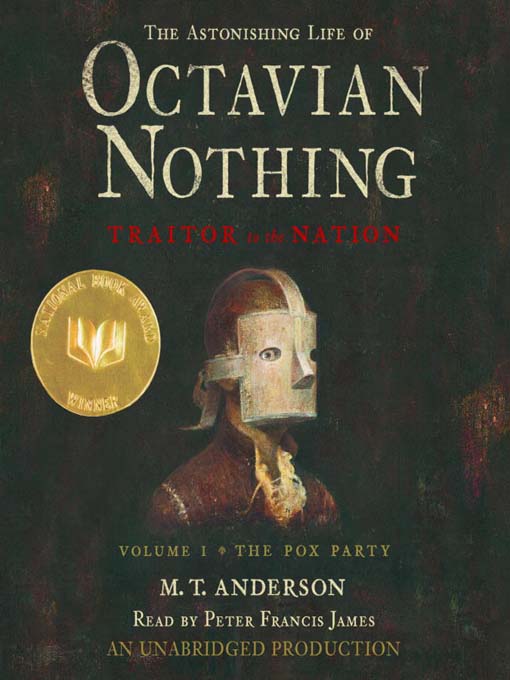
The Astonishing Life of Octavian Nothing, Traitor to the Nation, Volume I. The Pox Party
M. T. Anderson. Cambridge, MA: Candlewick Press, 2006, 351 pp. $17.99. Grades 11-up. ISBN 9-7636-2402-0
This astonishing mixture of political and social history in the 1760’s and 1770’s could as logically have been called “The Education of Octavian.” It is narrated, mostly, by the young Octavian who lives with his mother, the lovely Cassiopeia, and the faculty of the Novanglian College of Lucidity. Mr. Gitney, and members of the college, divine the secrets of the universe by writing poetry, drawing, and performing sundry experiments, among them taking a dog in, showing affection to it, and then drowning it to see how long the dog takes to die. While the College may remind readers of Swift’s Grand Academy of Lagoda with all its madness, their experiments are more cruel. Octavian has no idea who he is, but Mr. Gitney’s valet, Bono, makes the boy see that Octavian is as African as Bono. With this realization, Octavian understands that he is nothing more than a zoological experiment to the college.
Anderson is a born storyteller. His plot, full of convolutions, horrors, and, surprisingly enough, humor, will keep readers alert. Most of Anderson’s readers will follow him through Volume II. Certainly, I will. (KLD)
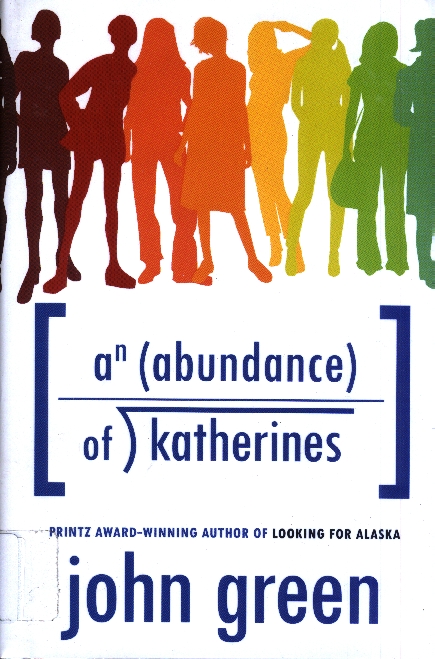 An Abundance of Katherines John Green. New York: Dutton/Penguin Inc., 2006, 230 pp. $16.99. Grades 9-up, ISBN 0-525-47688-1
An Abundance of Katherines John Green. New York: Dutton/Penguin Inc., 2006, 230 pp. $16.99. Grades 9-up, ISBN 0-525-47688-1
Colin Singleton grew up in Chicago as a child prodigy, complete with Suzuki violin lessons, television appearances on KranialKidz, mastery of a phenomenal number of ancient and modern languages, and the almost unconscious ability to form anagrams. His mind runs rampant with trivial details of history and science, all of which he finds fascinating and retains for instant retrieval like the human supercomputer that people have come to expect. But his intellect has always left him powerless over the apparent randomness of life, so powerless, in fact, that after failed love affairs with a long line of girls named Katherine (18 or 19, depending on how the counting is done), he attempts to create what he calls the Theorem, a mathematical equation that will allow him to predict the outcome of any new relationship. When Katherine XIX (the nineteenth) dumps Colin on the day of his high school graduation, he and his best friend, Hassan Harbish (aka Captain Funnypants), take off on a road trip from Chicago and find themselves welcomed and even comfortable in a culture/society which Colin can understand only by reading Foxfire, a publication put together by Appalachian kids starting in 1966 to explain the traditions and ways of life in the hills of rural Tennessee. As a study of human nature, Green’s novel is every bit as complex and intriguing as his Printz Award winner, Looking for Alaska. (KLD)
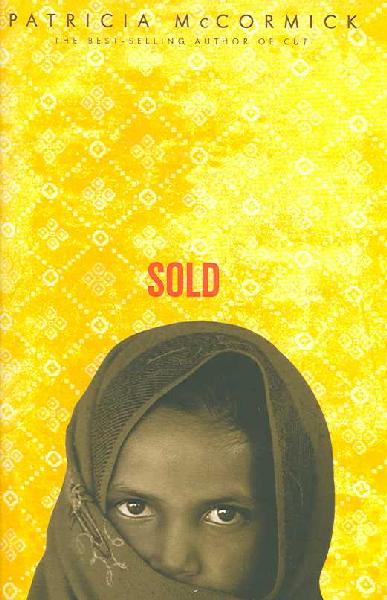 Sold Patricia McCormick. New York: Hyperion, 2006. 263 pp, Grades 9-up. ISBN 0-7868-5171-6
Sold Patricia McCormick. New York: Hyperion, 2006. 263 pp, Grades 9-up. ISBN 0-7868-5171-6
Sold is a terrible--but beautifully told--story. Before Patricia McCormick went to Nepal and India to interview victims, survivors, rescuers, and sex workers all along the chain, she did some serious research on the conditions and customs that in various parts of the world allow over half-a-million children to be trafficked each year into some kind of sex-related business. She chose to tell the sad story of Lakshmi, a thirteen-year-old girl from the mountains of Nepal. Lakshmi is instructed to tell people she is twelve because the younger a girl is, the more excited the customers are, and by the end of the story she is probably fourteen, but in her new life such details as birthdays are no longer thought of. Each time Lakshmi is sold, the price is considerably higher, but Laksmi is left out of the dealings. She is thinking about other things as explained in the chapter entitled “What I Carry.”
Inside the bundle Ama packed for me are:
my bowl,
my hairbrush,
the notebook my teacher gave me for being the number one
girl in school,
and my bedroll.
Inside my head I carry:
my baby goat,
my baby brother,
my ama’s face,
our family’s future.
My bundle is light.
My burden is heavy.
The layout of the free verse poetry provides white space which provides readers with breathing space and time to settle their emotions. The ending is hopeful, but by the time readers get to the final page they, along with Lakshmi, are considerably more enlightened about the problems of the world. (APN)
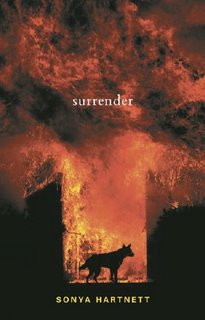 Surrender Sonya Hartnett. Cambridge, Massachusetts: Candlewick Press, 2006 (Australian printing, 2005) 248 pp. $16.99. Grades 9-up. ISBN 0-7636-2768-2
Surrender Sonya Hartnett. Cambridge, Massachusetts: Candlewick Press, 2006 (Australian printing, 2005) 248 pp. $16.99. Grades 9-up. ISBN 0-7636-2768-2
The author of surrender does not use a capital letter in the title, which left us pondering whether she named the book after Surrender, the dog, who plays a major role in the story, or whether she named both the dog and the book after the mental state of the main character, who at the beginning of the book is dying. He is twenty-years-old, and the further readers get into the story, the more clearly they see that the boy is mentally--as well as physically—ill, and they rightly wonder whether he was ever a reliable narrator. Hartnett’s book, which reviewers describe as a “psychological thriller,” is the story of the boy’s alienation and the way he sold his soul to a wild boy. The boy’s name is Finnigan and the first day the boys meet he brags:
Everything here belongs to me: I reign; I infect this town. I’m the unexplained noises, each mislaid bit and piece. I’m the murmur, the shadow, the creaking floor. I’m the blackout, the echo, the scratcher-at-the-door. (24) (APN)
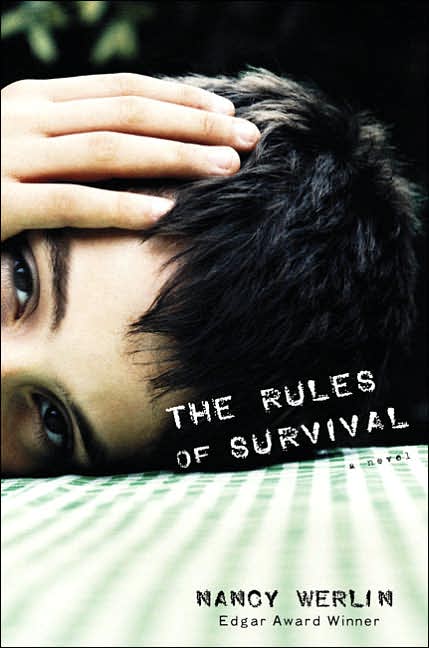 The Rules of Survival Nancy Werlin. New York: Dial/Penguin, 2006, 260 pp. $16.99. Grades 9-up, ISBN 0-8037-3061-2
The Rules of Survival Nancy Werlin. New York: Dial/Penguin, 2006, 260 pp. $16.99. Grades 9-up, ISBN 0-8037-3061-2
“The survivor gets to tell the story,” is part of the dedication as well as a line in Werlin’s taut novel about three children whose manic-depressive mother is so scary that by the end of the four years that are covered in the book, readers along with the children are still in fear of her. Matthew, the oldest child, is the narrator. He was thirteen when the story began and at the end he is getting ready to go off with a scholarship to the University of Texas. As he prepares to leave, he explains in a preface, written in the form of a letter to the younger of his two sisters, he is writing everything down so that maybe when she is seventeen, as he is now, or even twenty or thirty--whenever she wants or needs to know the story of their family’s life she can read it. But by the end of the book, Matthew is mature enough to realize that he did not write the letter for his little sister; he wrote it for himself.
So. Emmy. Little sister. You’re never going to read this, are you? I’m never going to give it to you. I didn’t write it for you. I wrote it for me. . . . to work my way through the story of what formed me . . . to examine the past and figure out . . . who I was . . . who I am and how I ought to act in the world. I think I have made a beginning. (260) (APN)
 American Born Chinese Gene Luen Yang. 2006. New York: First Second Books, 2006. 233 pp. $16.95. Grades 6-up. ISBN-13: 978-1-59643-208-6
American Born Chinese Gene Luen Yang. 2006. New York: First Second Books, 2006. 233 pp. $16.95. Grades 6-up. ISBN-13: 978-1-59643-208-6
Jin Wang is a third grader when his family moves from San Francisco’s Chinatown to the typical, White, middle class, American suburbs. As a first generation American of Chinese heritage, Jin suffers from the stereotypes and the prejudices of his peers and teachers as he starts at the Mayflower Elementary School and goes all the way through high school. Meanwhile, in a parallel story told in alternating chapters, Danny is an apparently run-of-the-mill, White suburbanite attending Oliphant High School. His attempts to have a normal high school life are plagued by the annual intrusion of his cousin, Chin Kee, from China. In a third (presumably unrelated story), Wong Lai-Tsao is a legendary Chinese monk, whose good deeds for the poor lead the immortals to entrust him with three packages to deliver “to the West” (139). He has the help of the Monkey King, a fabled creature whose attempts to be something other than what he is lead him on a journey of self discovery across whole dimensions. These seemingly unrelated stories accelerate to a common ending that illuminates all three. The pacing has the quickness afforded by a graphic format that facilitates and adds to the reading. Gene Yang is not only a brilliant storyteller but a gifted cartoonist, and the synergy of these two talents make American Born Chinese more than it could have been as just a print text book. This is another great offering from the Roaring Brooks innovative imprint, First Second Books. (JB, Jr.)
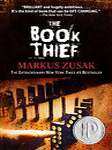 The Book Thief Markus Zusak New York: Knopf, 2006 (Australian printing, 2005). 550 pp. $16.95. Grades 11-12. ISBN 0-375-83100-2
The Book Thief Markus Zusak New York: Knopf, 2006 (Australian printing, 2005). 550 pp. $16.95. Grades 11-12. ISBN 0-375-83100-2
The Book Thief is about many things. It’s about Death and all the people it folds so kindly unto itself in World War II. It’s about some decent people that 12-year-old Liesel learns to love. It’s about bad (and some evil) people that Liesel learns to fear. It’s about the profane Rosa Hubermann and her love for Liesel. It’s about Hans Hubermann and his unquestioning love for Liesel. It’s about Rudy Steiner and his desire to kiss Liesel. It’s about the horrors of war and the terrors of bombs raining down. It’s about cruelty and anti-Semitism gone mad. It’s about Liesel and her love for books. Zusak tells a long and rich story. Readers will care about many people in the story, they will be horrified by some events, but the one they will not forget is Liesel. (KLD)
| Apply to ASU: undergraduate students | graduate students Course catalogs |
Page Contact: Alleen.Nilsen@asu.edu updated: October 10, 2008 |